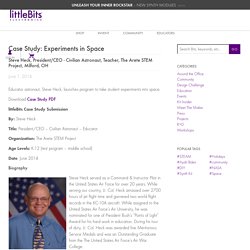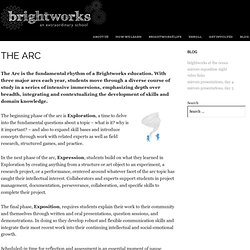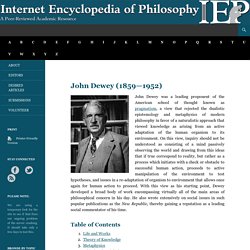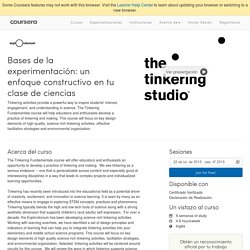

Canciones infantiles, el arca de Noe.mp3. Case Study: Elementary School Library Makerspace. Last week we were super impressed and inspired by the librarians we met at the American Library Association’s Midwinter Conference #alamw2015.

To keep the good vibes flowing, this week we have a case study from teacher-librarian Collette J. who is using littleBits as a learning tool in her elementary makerspace. Read more about her experiences below: Download Case Study PDF Submit Your Own littleBits Case Study Submission By: Collette J. Title: Teacher-Librarian. Case Study: Experiments in Space. Educator astronaut, Steve Heck, launches program to take student experiments into space.

Download Case Study PDF littleBits Case Study Submission By: Steve Heck Title: President/CEO – Civilian Astronaut – Educator Organization: The Arete STEM Project Age Levels: K-12 (test program – middle school) Date: June 2014 Biography Steve Heck served as a Command & Instructor Pilot in the United States Air Force for over 20 years. Further, Steve is the recipient of two of the highest honors any educator in our nation has received. Milford pupils to send experiments into space. MILFORD – About 50 Milford Exempted Village Schools fifth-grade pupils will be sending experiments into space next year, courtesy of a test program to promote interest in science, technology, engineering and math.

As the winning teams were announced May 28, a crowd of hundreds in Milford High School’s cafeteria cheered and applauded. Students representing “the Right Stuff” from a new generation of space pioneers proudly marched up to a podium to accept medals and certificates of achievement. “My favorite part was the adrenaline of waiting to see who was going to get to go into space,” fifth-grader Ty Dominguez said. The 11-year-old’s team from Meadowview Elementary will explore how microgravity affects an egg that hatches on earth when its experiment flies to suborbital space aboard XCOR Aerospace, a commercial spacecraft that plans to start offering space flights in 2015.
Heck’s vision? The spacecraft resembling NASA’s shuttle initially will make flights of an hour to 90 minutes. Engaging Students, Transforming Schools. Brightworks: An Extraordinary School. The Arc is the fundamental rhythm of a Brightworks education.

With three major arcs each year, students move through a diverse course of study in a series of intensive immersions, emphasizing depth over breadth, integrating and contextualizing the development of skills and domain knowledge. The beginning phase of the arc is Exploration, a time to delve into the fundamental questions about a topic – what is it?
Why is it important? – and also to expand skill bases and introduce concepts through work with related experts as well as field research, structured games, and practice. In the next phase of the arc, Expression, students build on what they learned in Exploration by creating anything from a structure or art object to an experiment, a research project, or a performance, centered around whatever facet of the arc topic has caught their intellectual interest. Then it’s time to begin again. Maker Education Initiative – Every Child a Maker. Tinkering School. Brightworks: An Extraordinary School. Maker Faire and Science Education: American kids should be building rockets and robots, not taking standardized tests. Photograph by Gregory Hayes.

On a morning visit to a Northern California middle school, I saw not a single student. The principal showed me around campus, but I didn’t see or hear students talking, playing, or moving about. The science lab was empty, as were the library and the playground. It was not a school holiday: It was a state-mandated STAR testing day. The school was in an academic lockdown. This is what the American public school looks like in 2012, driven by obsessive adherence to standardized testing.
The illustration is the prelude to the actual question, which is: Dewey, John. John Dewey was a leading proponent of the American school of thought known as pragmatism, a view that rejected the dualistic epistemology and metaphysics of modern philosophy in favor of a naturalistic approach that viewed knowledge as arising from an active adaptation of the human organism to its environment.

On this view, inquiry should not be understood as consisting of a mind passively observing the world and drawing from this ideas that if true correspond to reality, but rather as a process which initiates with a check or obstacle to successful human action, proceeds to active manipulation of the environment to test hypotheses, and issues in a re-adaptation of organism to environment that allows once again for human action to proceed.
With this view as his starting point, Dewey developed a broad body of work encompassing virtually all of the main areas of philosophical concern in his day. Table of Contents 1. Life and Works 2. 3. The Flipped Classroom: The Full Picture for Tinkering and Maker Education. If you have been following my blog series on The Flipped Classroom: The Full Picture, you know that I am using this opportunity, given all the press on flipped classroom, to discuss a model of teaching and learning based on experiential education.

It is a model in which authentic, often hands-on, experiences and student interests drive the learning process, and the videos, as they are being proposed in the flipped classroom discourse, support the learning rather than being central or at the core of learning. The idea of experience being core to learning has been discussed by Dale Dougherty, the publisher of Make Magazine, in the context of Maker Education: I see the power of engaging kids in science and technology through the practices of making and hands-on experiences, through tinkering and taking things apart. Schools seem to have forgotten that students learn best when they are engaged; in fact, the biggest problem in schools is boredom. The Art of Tinkering.
Bases de la experimentación: un enfoque constructivo en tu clase de ciencias - Exploratorium. Acerca del curso The Tinkering Fundamentals course will offer educators and enthusiasts an opportunity to develop a practice of tinkering and making.

We see tinkering as a serious endeavor -- one that is generalizable across content and especially good at interweaving disciplines in a way that leads to complex projects and individualized learning opportunities. Tinkering has recently been introduced into the educational field as a potential driver of creativity, excitement, and innovation in science learning. It is seen by many as an effective means to engage in exploring STEM concepts, practices and phenomena. Tinkering typically blends the high and low tech tools of science along with a strong aesthetic dimension that supports children's (and adults) self expression.
Programa del curso PLEASE NOTE: because this is a hands-on workshop, you will need materials to complete the weekly activities at home.